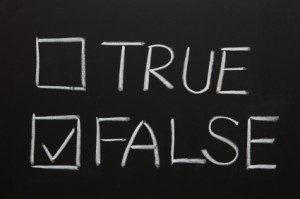Questions To Improve Decisions

What else should I consider?
One of the critical skills of critical thinking is the ability to ask insightful, illuminating questions. Indeed, questioning is an attitude as much as a skill. As information flows into our brains, we know that it needs to be checked for clarity and accuracy. We assume the same attitude that a warehouse manager might have: all incoming deliveries need to be checked.
I always keep two simple questions in mind:
Why do I/you think that?
How do I/you know that?
These help me review incoming information quickly. I can then assign the information to three large – and fairly fuzzy – categories:
Probably true
Probably not true
Unproven/can’t evaluate
The virtue of my little system is not that it’s 100% accurate but that it’s simple. I can do it in real-time and keep rough track of ideas and concepts while discussing them. It’s fuzzy and lumpy but also quite handy.
When I asked my students about their go-to questions, they came up with five categories in a stepwise process, beginning with gaining self-control and ending with fixing the process. Their system covers more bases than mine and the categories are more structured. The downside? I find it hard to remember five things simultaneously. It’s great for moments of quiet reflection and evaluation but less useful for real-time discussions.
I may have found a compromise between the two systems. Joe Y.F. Lau calls it the fourfold path to good thinking in his book, An Introduction to Critical Thinking and Creativity. The four questions in Lau’s path are straightforward:
- What does it mean? – Subquestions might include: Are the main concepts clear? Can we make it more precise? Are there examples that illustrate the concept (or its opposite)? How does this concepts relate to other concepts that I believe to be true (or untrue)?
- How many supporting reasons and objections? — Subquestions might include: How many reasons tend to support the claim? How many reasons tend to undermine the claim? Can we identify examples and counterexamples? How many of each?
- Why is this important or relevant? — Subquestions might include: What are the consequences? Is it surprising? Have I learned something new? Who is supporting (or opposing) this claim? Why are they doing so?
- Which are the other possibilities to consider? — Subquestions might include: What other information might be relevant? What other cases should we think about?
The last question seems very similar to two other sources. As Daniel Kahneman reminds us: What you see is not all there is. As the Brothers Heath remind us: the first step of the WRAP decision process is, Widen Your Options.
The output of Lau’s system becomes the input to Kahneman and Heaths’ decision-making frameworks. The beauty of Lau’s system is that it verifies and evaluates the information before it gets into the decision process. Like the warehouse manager, we ensure the quality of the input. That’s necessary (but not sufficient) to ensure the quality of the output.
The other virtue of Lau’s approach is its simplicity. I can keep four points in mind (most of the time). Perhaps we can simplify it even further by creating an acronym from it. Anyone want to try?
Another simple approach for understanding a situation / getting to root cause is the “5 whys” technique:
http://en.wikipedia.org/wiki/5_Whys
Hi Al — Thanks for your comment — it’s a good insight